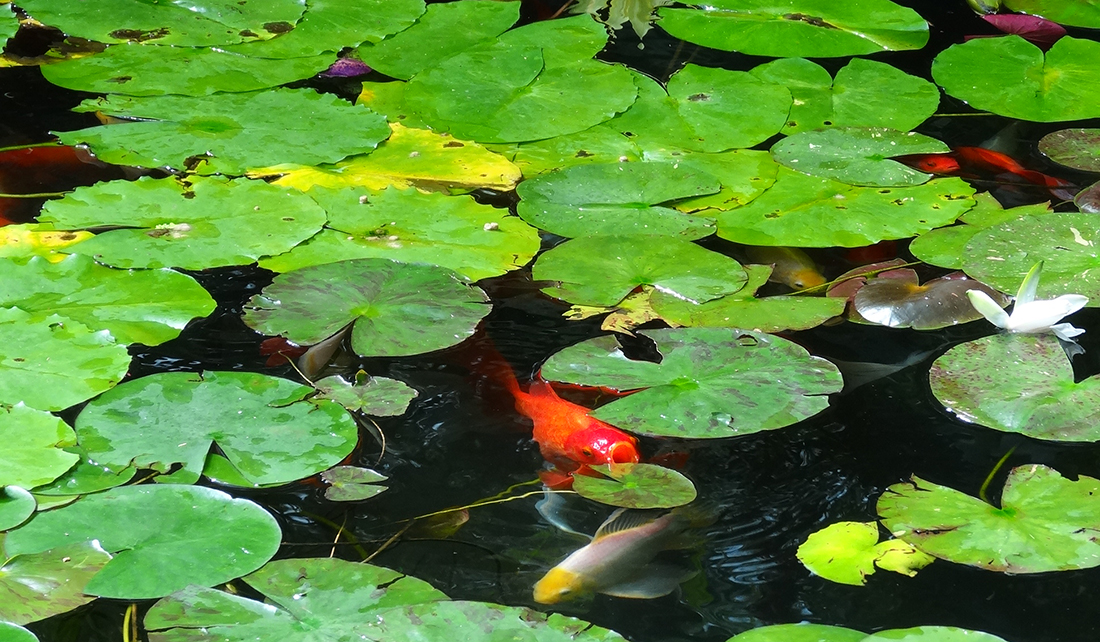 With the peak of summer right around the corner and gardening season in full swing, we’d like to use this moment as a reminder to be careful about what you choose to plant – particularly if you have a water garden.
With the peak of summer right around the corner and gardening season in full swing, we’d like to use this moment as a reminder to be careful about what you choose to plant – particularly if you have a water garden.
A departure from traditional dirt landscaping, water gardens come with their own set of complications and challenges when it comes to the spread of invasive species. Some key things to keep in mind – make sure your water garden is not near any waterways or flood-prone areas to reduce the risk of any species spreading to natural areas, and always rinse off any dirt or debris from all parts of the plant before planting, to get rid of any potential eggs, animals, or unwanted plant parts and seeds.
If you are planning on cultivating a water garden this summer, and would like more information, check out our brochure and handy wallet card for tips and guidelines on what precautions to take during the gardening process, as well as lists of what plants to grow and what plants to avoid.
These lists are the product of research conducted at Loyola University Chicago and University of Notre Dame, taking into account biological characteristics such as rates of reproduction and climate tolerance to determine which plants are most likely to become invasive. On the flip side, horticulturists and scientists from the Chicago Botanic Garden were consulted to figure out what native or non-invasive plants are the best alternatives. With this information, we hope you are successful in making your water gardens a little safer, and your summer a little more beautiful.
For more information on invasive species and what you can do to help, visit TakeAIM.org.
Illinois-Indiana Sea Grant is a part of University of Illinois Extension.
Visitors to Jens Jensen Park in the Chicago suburb of Highland Park will notice a change to the landscape this year. The Fountain of the Blue Heron, nestled between the park’s grassy land and thick forestry, has been transformed into a water garden. But this is no ordinary water garden. Like much of the park surrounding it, this garden was built with plants that are native to northeastern Illinois.
The fountain was redesigned by the Park District of Highland Park and the Chicago Botanic Garden, with funding assistance from Illinois-Indiana Sea Grant, to give park visitors a closer look at how native aquatic plants like lizard’s tail, water willow, and sweet flag can be used to create beautiful, healthy water gardens.
“Native plantings have gotten a bit of a bad rap,” said Bob Kirschner, director of restoration ecology at the Chicago Botanic Garden. “They are often seen as weedy and unorganized. We wanted to demonstrate how you can use native aquatic plants to achieve the ornamental look many people desire.”
Using native aquatic plants like those in Jens Jensen Park is about more than just creating striking water gardens, though. Growing native species also helps curb the spread of invasive aquatic plants that outcompete native species and upset food webs. Invasive species common in water gardens are already threatening the health of Illinois waterways. For example, the fast-growing Brazilian Elodea—typically sold in aquarium stores and water nurseries under the name “Anacharis”—has been found in several lakes and ponds in Illinois, including in a community not far from Highland Park. Like many invasive plants, this waterweed grows in dense mats that block out sunlight needed by other species and hinders water recreation. And it is nearly impossible to remove once it has been introduced.
“Once an invasive species has become established, the negative impacts on the environment cannot be fully reversed,” said Greg Hitzroth, an IISG aquatic invasive species outreach specialist. “By growing non-invasive species, gardeners can help prevent a new population of harmful species from taking root in local environments.”
The over one dozen species of aquatic plants at home in Jens Jensen Park will also provide food for birds, insects, and other wildlife. Native plants are especially important for pollinators like bees and butterflies that keep northeastern Illinois’ natural areas flowering.
Visit IISG’s Aquatic Plants in Trade website to learn more about aquatic invasive plants and read this water gardening brochure to learn how you can help curb the spread.
![]() With the peak of summer right around the corner and gardening season in full swing, we’d like to use this moment as a reminder to be careful about what you choose to plant – particularly if you have a water garden.
With the peak of summer right around the corner and gardening season in full swing, we’d like to use this moment as a reminder to be careful about what you choose to plant – particularly if you have a water garden.

